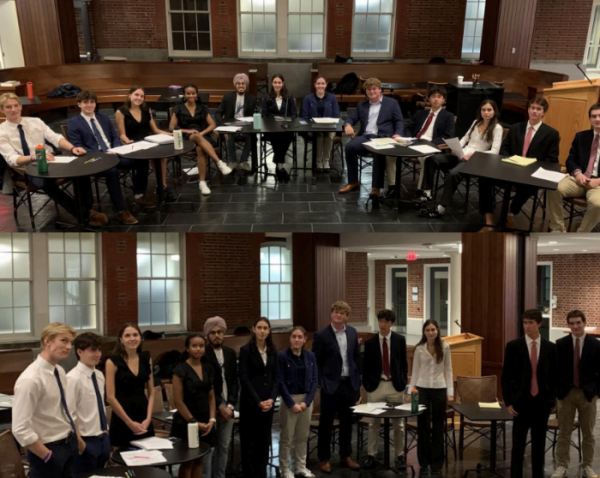New Environmental Initiatives on Campus
If the world is already producing more than one and a half times enough food to feed everyone on the planet, why are people still starving? According to the United Nations Food and Agriculture Organization (FAO), one of the key factors contributing to world hunger is indeed food waste.
The FAO reported that we throw out 1.3 billion tons of food every year. That’s approximately equivalent to a third of all the food we grow. The 40% of food Americans discard piles up in toxic landfills, increases our carbon emissions, and contributes to global warming, per the National Resources Defense Council.
Many Americans are unaware of the detrimental effects of food waste. Take, for example, the burger––an American staple, one we see often in Groton School’s dining hall. As reported by the Los Angeles Times, it takes 660 gallons of water to create one burger. Therefore, preparing just one extra burger results in wasting the equivalent of 38 showers’ worth of water.
The environmental costs of transportation and water use in producing food can be vast. Lucy Gund ’19, a head of the Groton Sustainability Committee, believes this may be one of the biggest crises facing mankind, elaborating, “Students don’t realize the amount of work and resources that goes into our food, with meat, gallons and gallons of water, cows with methane, land to feed the livestock, industrial agriculture.” She hopes students at Groton can understand this: “We must be aware of the whole process, not just the final product.”
One of Groton’s efforts to spread awareness is joining the Independent School Sustainability Coalition (ISSC) this year. The ISSC is a group of schools in New England that have united with the end-goal of reducing our respective campuses’ carbon footprints. Last year, the ISSC founded a magazine called Gaia. Addressing our environmental impact, the magazine collects photographs and articles written by both students and teachers, and is another initiative focused on spreading awareness about environmental issues across many schools. Students at Groton are encouraged to read the magazine and potentially even contribute material.
Fully aware of the food waste quagmire, the Dining Hall is working with our Sustainability Committee and the ISSC to tackle our environmental problems one step at a time. The Dining Hall has recently implemented the Waste Not initiative, aiming to curb food waste by having people empty remaining food from their plates into a clear bin that rests on top of a scale. Ed Wetterwald, Groton’s head chef, explained, “By putting the bucket of food waste out there, we are trying [to] show students really how much they are wasting.” The first week of the campaign showed that the community had wasted 220 pounds over the course of four lunches according to Ms. Larocque from the Dining Hall.
An exciting event organized by Groton’s Sustainability Committee is the food waste competition against St. Mark’s School. Fran Saldivar, a head of the committee, believes that the friendly rivalry is an effective incentive to reduce food waste, especially since the competition falls during spirit week as the campus eagerly awaits St. Mark’s Day. Results from the first day showed Groton in the lead, producing 19 pounds less food than St. Mark’s.
In the coming weeks, both the Sustainability Committee’s competition and the omnipresent clear bucket filled to the brim with leftover food will remind students to be conscious of what they are eating and how much food is being wasted.









